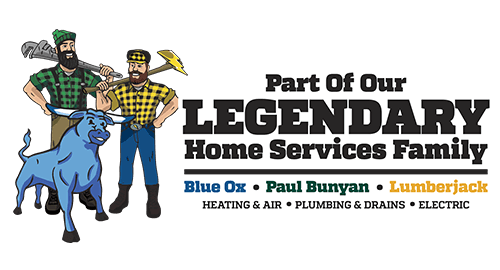Up until fairly recently, sewer repair work required several backhoes and other heavy-duty construction machines to do extensive digging. The excavation process was slow-going and expensive, and it usually required traffic to be rerouted or people to temporarily stay somewhere else while their home was being worked on.
Thanks to the wonders of modern technology, in St. Paul, MN, today we have trenchless sewer repair, a much less invasive process that repairs damaged drainage pipes just as effectively as older, traditional methods.
What Exactly Is Trenchless Sewer Repair?
Many people in the United States are still unfamiliar with trenchless repair methods. While it isn’t a new technique by any means, it was primarily used in Europe until the late 1980s. Even then, it didn’t become widely used in America until much more recently.
In plumbing speak, a trench is a narrow ditch dug to access underground pipes. As the name implies, trenchless sewer repair doesn’t require that a trench be dug at all. Instead, smaller holes are dug at the end of a sewer pipe to serve as access points. In some cases, only one hole is needed. This completely eliminates much of the destruction caused by older sewer repair methods.
There are four main types of trenchless sewer repair, each with unique benefits and applications.
- Pipe bursting – When a pipe needs to be replaced altogether, pipe bursting is usually the preferred method. A winch with a bursting head is used to pull a new pipe directly into the old one. The process breaks the existing pipe, making room for the one to replace it completely. Typically HDPE, high-density polyethylene, is used to replace aging pipes because it is flexible but impermeable and incredibly strong. This method is the least expensive and fastest trenchless sewer repair method.
- Structural pipe lining or cured-in-place pipe lining – Without any digging or destruction, this method creates a brand new pipe directly inside the existing damaged one. Structural pipe lining involves inserting a seamless felt liner into the old pipe and curing it for several hours using resin or epoxy. During the curing process, the lining becomes a new pipe. This is one of the most commonly used trenchless repair methods, but it does not work well in pipes with several joints and bends or those under 2″ in diameter.
- Spray lining and brush coating – This technique is similar to spray lining and brush coating, but rather than inserting a liner into the damaged pipe, epoxy, resin, or another polymer is sprayed or brushed onto its interior. Spray lining is often used in plumbing systems that have very small, hard-to-reach pipes.
- Slip lining – This method was the original form of trenchless repair work and has been around since the 1940s. A smaller pipe is placed inside the damaged one and the area between the two is filled with grout. Of all the trenchless methods, slip lining is the most invasive – though still much less so than traditional ones – because a larger hole must be dug in order to insert and lower the inner pipe segments. It also only works well on larger diameter pipes and because of that, there are some plumbing companies that do not even perform this type of repair.
The Benefits Of Trenchless Repair
Not to take anything away from conventional sewer repair methods – because they do absolutely work, but the newer technology in trenchless sewer repair is pretty incredible. Trenchless repairs are overall more effective because they’re faster and don’t require people to be inconvenienced, and therefore are less expensive in the long run.
- Faster – What used to take traditional sewer repair methods several days or even weeks to complete, trenchless sewer repair can get done in a single day, and in some cases, just hours. One important thing to keep in mind that even once the digging and actual work was done with the older methods, everything had to be put back together again, adding additional time to the repairs.
- Less invasive – With modern sewer repair methods, there’s no need to dig up people’s living rooms or tear down interior walls, and St. Paul, MN street traffic doesn’t need to be re-routed while repairs are being done. In virtually all instances, sewer pipes are underground and therefore not easily accessible, but trenchless repairs minimize the work that must be done to get to them.
- Cost-effective – Initially, the cost of trenchless sewer repair seems high. Higher, in fact, than traditional repair methods. However, because minimal property damage is done when the trenchless route is used, it is actually far more affordable. The trenchless technology doesn’t require much destruction or displacement, so there is very little to do on the other end once the work is completed. With traditional techniques, it’s not at all uncommon to have to spend thousands of additional dollars just re-assembling a home or repairing streets and sidewalks.
- Durable/designed to last – The modern materials used in trenchless sewer repair are far superior to more traditionally-used materials. Concrete, steel, and other pipe materials that used to be frequently used can crack, corrode, collapse, and rust. Newer, more modern methods and materials such as resin, PVC, epoxy, and several others are resistant to these things.
- Highly effective – Just as effective as traditional methods (maybe more?) The only reason it isn’t used 100% of the time is because it’s not appropriate in every situation or location.
If your home or building needs some sewer repair work done, the great news is that modern methods have become faster, more economical, and less invasive. Not all plumbing companies offer trenchless sewer repair services, however.
In St. Paul, MN, and the surrounding areas, Paul Bunyan Plumbing & Drains does provide trenchless sewer repair services for a variety of applications. If you have questions about the service or would like to schedule an appointment, give us a call at (952) 209-9330 or contact us online.


